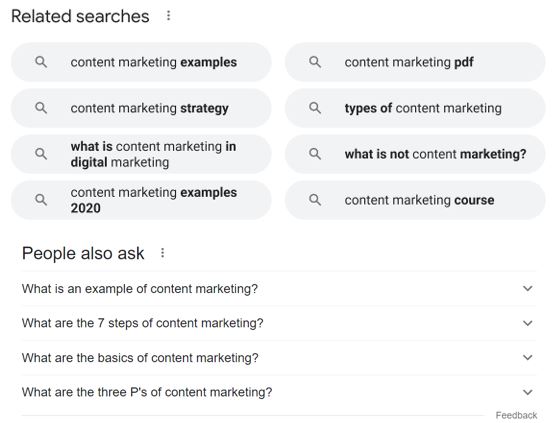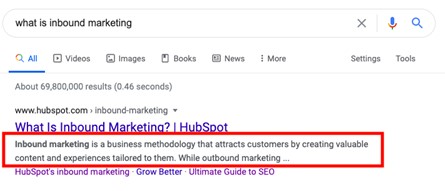Keyword research is a vital part of any SEO strategy, here is LOCALiQ’s guide to conducting effective keyword research.
In this guide we will cover:
- What are keywords?
- How do keywords work?
- What are the different types of keywords?
- What are the best free tools for keyword research?
- How to choose the right keywords.
- Where to use keywords?
- Keyword research recap.
What are keywords?
“Keywords” (“keyphrases” or “search queries”) are words or phrases that users type into search engines, such as Google, to find what they are looking for. In terms of SEO, keywords help to define what your content is about so search engines can index and rank it accordingly on search engine results page (SERP).
How do keywords work?
If you find out which words your audience typically searches for, then you can use those words in your headings and text to optimise visibility of your content. This way, when your web pages appear in the search results, they will reach online customers who searched using the same keywords or phrases.
Keyword research helps you to answer the following questions:
- What are people searching for?
- How many people are searching for it?
- What format do they want to receive information in?
- How difficult will it be to rank for that search query?
Anything searched on a search engine, whether a single word or a phrase, is considered a keyword. Preferably you want to target keywords which have a high search volume (the number of times a particular keyword is entered into a search engine per month) and a low keyword difficulty (a metric used to determine how difficult it is to rank for a keyword).
What are the different types of keywords?
There are three types of keywords:
- Head terms (also known as fat head) = are single-word keywords with high search volume, however, they’re much more competitive, meaning they are difficult to rank for (e.g. coffee).
- Body keywords (also known as Chunky or Middle) = are 2-3 word phrases with decent search volume. These are slightly more specific than head terms and therefore are slightly less competitive (e.g. coffee machine).
- Long-tailed keywords = are usually several words long. These phrases typically have a low search volume, however they are much less competitive because they are narrowed down to a niche topic (e.g. which coffee machine is best for home).
Long-tailed keywords are arguably the most important for improving SEO, they are much better than solitary keywords because they focus very specifically on a topic. For example, searching a head term i.e., ‘marketing’ will bring a wealth of results covering a broad set of topics. Whereas a long-tail keyword i.e., ‘how to implement a good marketing strategy’ generate results with lower competition, giving you an advantage when it comes to search engine ranking. Additionally, website visitors who search long-tail keywords are more likely to fully engage with your content and seek further information, thereby generating the right type of traffic to your website.
Top tip: A good rule of thumb is to focus on one or two long-tail keywords when writing blogs or creating content for your website.
Google’s related searches and auto suggestions are a great place to start when researching keywords. These are keyword I that come directly from Google, meaning you don’t need to guess if they are popular or not because Google is literally telling you that loads of people search words.
To get started simply research a frequently asked question or keyword that your customers might be searching. Scroll to the bottom of the page and you will find a list of 8 keywords related to your search.
Example of ‘content marketing’ search query ‘Google related searches’ and ‘people also ask’.

What are the best free tools for keyword research?
You can also use SEO tools to identify keywords that closely match your main keywords, which you can then use in your blog posts. Here are some free SEO keyword tools you can use:
Keywords Everywhere – A free plug-in for Chrome & Firefox that shows search volume, search difficulty, suggested keywords and competition on multiple websites.
Moz Search Bar – A free Chrome Extension that makes it easy to get link metrics and do all your SEO on the go.
SEO quake – A free add-on that provides you with key SEO metrics, along with other useful tools such as SEO Audit and many others.
Useful websites:
AnswerThePublic – A free a keyword tool that visualizes search questions. This tool collects data from search engines and quickly displays every useful phrase and question people are asking around your keyword in an image called a search cloud.
Uber Suggest – A free SEO keyword research tool that specializes in generating new keyword ideas.
How to choose the right keywords
Once you have collected a list of potential keywords it is times to narrow it down and select the keywords most relevant to your audience and business goals.
Here are some things to keep in mind:
- Relevance
The more relevant the better! Ask yourself how relevant are your keywords to the search intent of your target audience? And make sure the content topic aligns with your brand and the industry you are in. - Search Volume and competition
As previously mentioned, you want to choose keywords with a high search volume and low keyword difficulty to help you rank highly on SERPs. To avoid ending up in a losing battle competing with industry giants, it is recommended to focus on specific long-tail keywords. Although long-tail keywords typically have lower search volume, using them reassures the users that your content is highly related to their search intent, and they are more likely to convert. - Authority
Use competitive SEO metrics like Domain Authority (DA) to predict how likely your website is to rank in search engine results. DA works on a 0-100 scale with higher scores indicating stronger ranking potential. Sites with more backlinks and unique referring domains are more likely to have higher DA scores. This can be used to your advantage if you choose keywords with medium to high search volume that only return search results featuring websites that have a low amount of backlinks and DA. - Trends and projection
Google Trends, gives you the option to opt for low-volume keywords that have a positive trend history and projection. This allows you to assess whether a specific topic may become more popular in a few weeks or months, which can be harnessed to your advantage when researching keywords for future content.
Where to use keywords?
Now that you’ve decided on your keywords, it’s time to incorporate them into your blog post. But where is the best place to include these terms so you rank high in search results?
There are four essential places where you should try to include your keywords:
- Title
The title (or headline) is the first thing readers and search engine’s sees to determine the relevance of your content. Therefore, it is crucial to include your main keyword here! Make sure to use your keyword within 60 characters of your title, otherwise it will be cut off on the SERP.

Use this Title Tag Preview Tool to sample different titles. - URL
The URL is one of the first things search engines crawl on a page to find out what the post is about. Each of your webpages and posts will sit on a unique URL, this presents an opportunity to optimise your URLs on every post you publish. You should ensure to include your one to two keywords in it. - Meta description
The meta description is a 200-character summary of your webpage which is displayed below your Title on the SERP. Your meta description is meant to give search engines and readers information about your webpages content.
It is vital to include your keywords in your meta description because they can dramatically impact your websites click rates which in turn, will improve you search engine rankings. Here you should provide a compelling description with engaging information to persuade readers to click on your listing. - Headers & body paragraphs
Add your keywords into the headings of your webpages and in the body’s main paragraphs so that web crawlers can easily understand the content and index it accordingly. It is recommended to use keywords in your subheadings as well but avoid keyword stuffing as this can make the text unnatural.
Keyword research recap:
- Use 1-2 long-tail keywords.
- Google’s related searches and auto suggestions are a great place to start.
- Choose keywords with a high search volume and low keyword difficulty.
- Include your keywords in your title, URL, meta description, headers and paragraphs.
- Be mindful to avoid keyword stuffing.
LOCALiQ can help you with all aspects of your digital marketing. Still have some questions about keyword research? Get in touch with one of our SEO experts and see how we can help you!
Recommended reading:
Try This Local SEO Checklist to Improve Your Rank in 2022
SEO basics: A beginner’s guide to getting started with search engine optimisation






